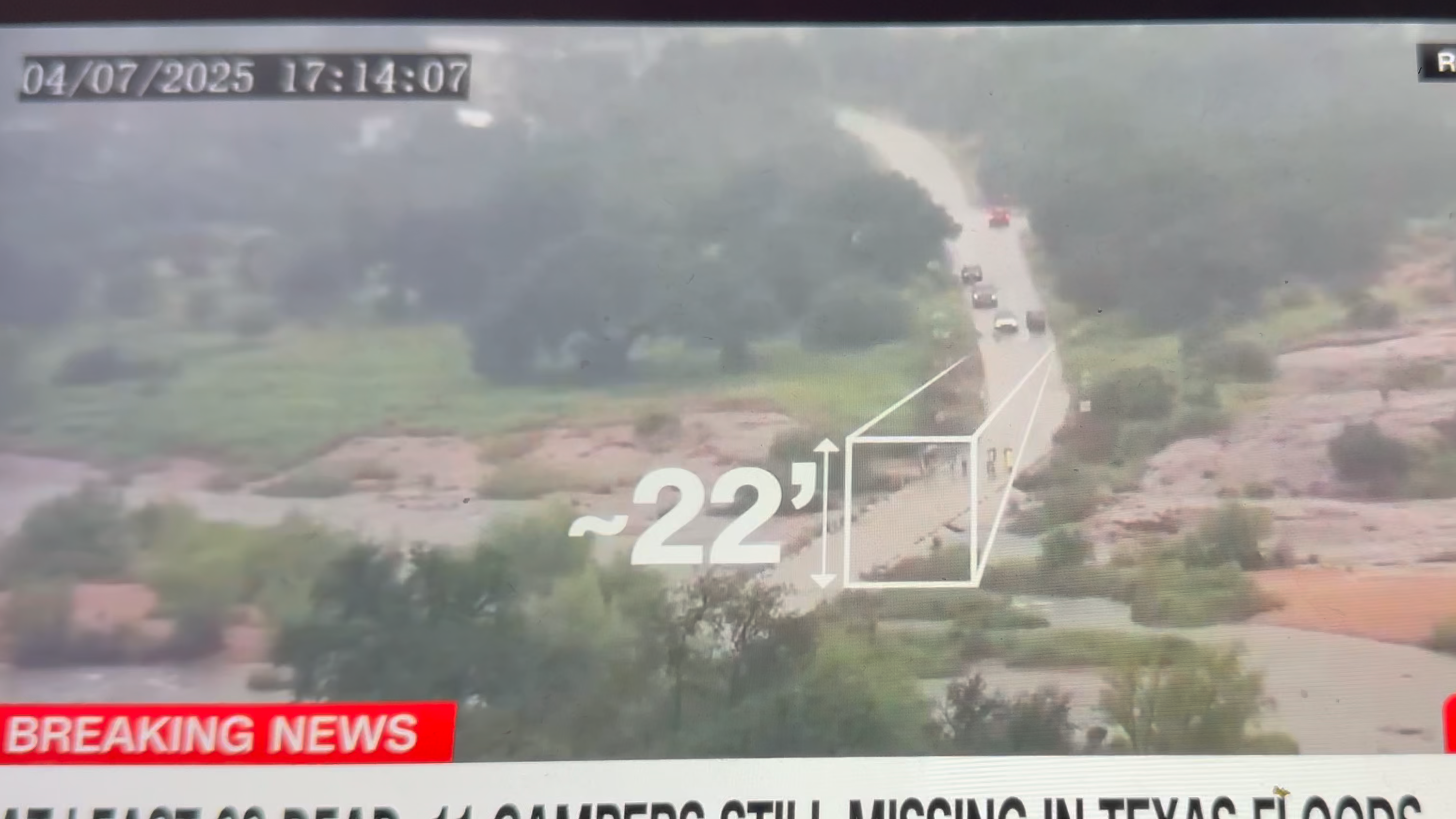On the night of Friday, July 4, the Guadalupe River in Texas rose more than 26 feet in just 45 minutes, triggering catastrophic flash floods throughout the Hill Country. Communities near Kerrville were overwhelmed. Camp Mystic, a beloved girls’ camp, was among the hardest hit. As of this writing, more than 100 lives have been lost, and over 160 people remain missing.
In the days that followed, news outlets scrambled to make sense of the disaster. The tragedy was enormous—but a few pieces of coverage managed to go beyond explanation and create something more: empathy.
One that stood out was a CNN time-lapse video of the nearby Llano River. In just 30 minutes, you watched the river rise 22 feet—not through CGI, not through animation, but through a simple overlay box placed atop a real video. No narration. No frills. Just water, movement, and a quiet graphic tracking elevation as the scene transformed before your eyes. That video is below.
You didn’t just see the flood. You felt it.
That’s the lesson for trial presentation companies like ours: when a fact is too big to comprehend, the job isn’t to simplify—it’s to translate it into something human.
When Real Footage Does the Persuading
We’ve written before about how tools like animation can clarify complex facts. In Watch the Weather Channel Use Animation to Persuade, we explored how meteorologists have raised the bar for visual storytelling—making hurricanes feel like living threats instead of abstract radar blobs.
The CNN video from Texas accomplishes something similar without a single frame of animation. Just a real, continuous scene with one smart overlay. And that’s all it needed.
This kind of visual works because it shows change over time. It creates a before, a during, and an after. It puts viewers in the shoes of the people affected. You don't need to explain what a 22-foot rise means when you watch the water devour a picnic table, then a footbridge, then the trees.
That’s what your trial team should strive for in your trial graphics. Not just clarity. Not just context. Impact.
Persuasion Is a Strategy
We often work on cases involving an enormous scale: hundreds of thousands of emails, decades of alleged misconduct, and financial damages so vast that they become meaningless to a layperson. Jurors don’t understand a terabyte. They understand what a terabyte feels like when it’s stacked in floor-to-ceiling boxes, taking up an entire courtroom.
They understand time better when they see it in comparison to something they’ve experienced firsthand. They understand scale better when we show a warehouse that’s larger than a football stadium—or better yet, four football stadiums.
In flood coverage, visuals like the Llano River time-lapse work because they don’t tell the viewer what to feel. They show them what happened in a way they can’t unsee. It’s not manipulative. It’s persuasive.
And that’s our job in trial graphics, too.
From Hill Country to the Courtroom
If there’s a takeaway here for litigators and trial teams, it’s this:
-
Let your visuals move.
-
Use real reference points—natural or man-made.
-
Make your graphics do more than explain. Make them connect.
When tragedy strikes, the most powerful visual isn’t always the most complex—it’s the one that brings truth and emotion together.
More reading from Persuadius regarding size, scale, and animation:
- How a Trial Presentation Company Illustrates Scale: Lessons from Boeing
-
Litigation Support: Making Sense of the Statistically Significant






Leave a Comment